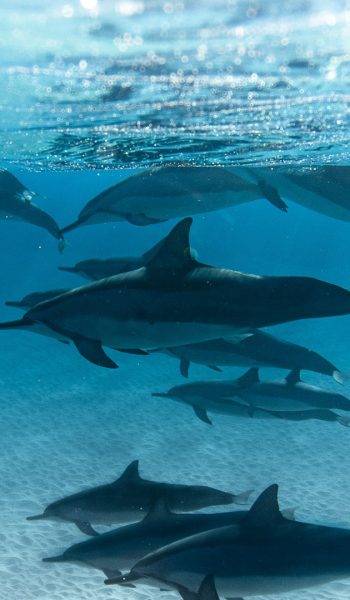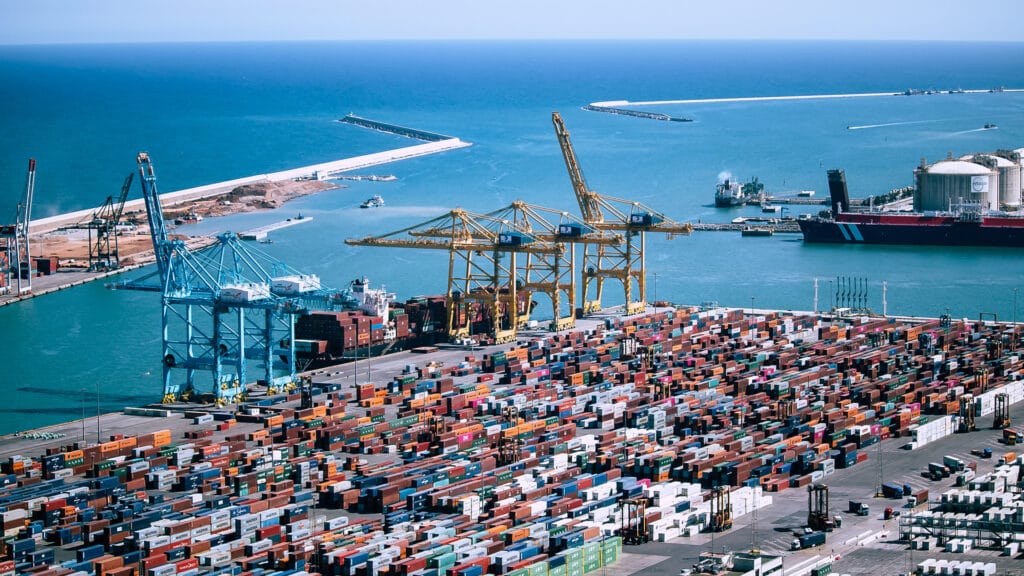What Is Dredging?
Dredging removes sediment and other materials from the bottom of a body of water. Ports must dredge due to the natural buildup of sand and silt that occurs from rivers, currents, and streams moving around sand and particles.
Your environmental monitoring at your fingertips!
Optimize your environmental monitoring, become smarter and more sustainable with a unified system that gathers all your environmental sensors & data in one place.

What Is the Purpose of Dredging for Ports?
Ports across the world dredge to enlarge and deepen access levels, ensuring safe navigation, competitive advantage by welcoming large vessels, remediation, and flood management. Each year, millions of tons of bottom sediments are dredged in our seas and ports. Regular dredging helps avoid the problems caused by the natural process of sand and silt washing downstream and filling river and sea channels as well as harbors. Dredging also allows port expansion so that the growing shipping market may be accommodated: the shipping industry is growing, and ships are getting larger. Ports must perform sediment excavation to construct and enlargen a port.
There are ships now almost as big as the Empire State Building and ships the size of the Eiffel Tower are common. For these large vessels to enters ports, to remain competitive, and to ensure smooth port operations, ports must dredge the seabed of their surrounding areas.
You may be wondering, where does the sediment go? Are there rules when they dredge? How does this impact the areas around the operations?
What Is Dumping?
As dredging is the removal of sediments, these sediments must then be placed somewhere else. This is called dumping. The removed sediments are taken from the site area and transported away to a different area in the sea or on land.
There are rules regarding dredging and dumping.
- To dump after dredging, there must be no recorded pollution levels in the sediment so it can be placed somewhere else in the sea or ocean.
- If there are recorded levels of pollution, the sediment must be brought on land to be treated before being spread in the water which can be costly. Polluted sediments require separate treatment on land before their disposal, with ports responsible for transporting the material inland for cleaning, resulting in additional operating costs and potential project delays. Once the sediment is cleaned and on land, it can even be cheaper for ports to leave it there for uses such as farming.
How Do Ports Know When to Dredge?

When turbidity is present in water, it indicates that sediment build-up is present and that therefore pollution could also be present. Turbidity is composed of fine sediments and organic matter that may collect pollution like heavy metals. Turbidity is a natural process that happens when saltwater meets fresh water in estuaries or can be caused by maritime activities. The problems occur when either the particles in the turbidity fall and create build-up or if pollution is present in the turbidity sediments.
Turbidity levels are one of the parameters that Sinay measures with the Sinay Water Module. To explain, sensors in the water measure the level of turbidity. Turbidity is the level of cloudiness in the water and is a key indicator of water quality. Turbidity is caused by natural factors, such as storms, waves, and heavy currents; however, construction activities, land activities, and maritime activities can create pollution associated with this organic matter suspended in the water before reaching the ground. For example, turbidity can be increased from land activity pollution that is carried to ports during a storm.
By monitoring turbidity, ports know if their dredging works or other works have an impact on water quality and for how long. Turbidity can also signal if ports are being filled up with sediment. In this case, elevated levels of turbidity signal the need to dredge must be checked.
What Are the Main Impacts of Dredging?
Dredging, and knowing the right time to dredge, can significantly impact port operations and the environment. However, ports can now use data to monitor these impacts in real-time – and act quickly.
Impacts on Ports
Ports perform dredging to deepen their seabed to welcome larger ships, to increase business activities, and to clear the buildup of sand and silt brought by currents and rivers. However, if ports are not smart about their dredging activities, then this can be costly. That is why it is essential ports monitor the quality of their water with turbidity parameters to perform dredging in the least costly and safest way possible.
As mentioned in the article Five Area Ports Can Easily Improve Operations for Better Business, ports also face the challenge of dealing with environmental impacts caused by dredging.
Pollution Reaching Aquaculture and Fishing
Dredging-related activities impact shellfish (e.g., clams, oysters, and mussels) and fish stocks.
This affects the quality of the shellfish and fish we eat, together with the sustainability of the aquatic environment. Dredging-related stressors, including suspended sediment, and possibly contaminated sediment, in turbidity, hydraulic entrainment, and underwater noise, directly influence the size and the response elicited in fish across all aquatic ecosystems and all life-history stages, impacting fish mortality rates.
Turbidity can also change the way shellfish feed. If the water is full of sediment, then they eat more organic matter. The Sinay Water Module can detect when turbidity levels and other parameters change so that the shellfish can be relocated if possible.
Spreading of Pollution and Reduction of Oxygen
Dredging activities can spread contaminated materials and therefore exacerbate the problem of pollution. An example is a dispersal into the water of oxygen-consuming substances, nutrients, and harmful materials attached to the sediments. This can change the sediment’s oxygen content or increase the concentration of nutrients or harmful materials.
Your environmental monitoring at your fingertips!
Optimize your environmental monitoring, become smarter and more sustainable with a unified system that gathers all your environmental sensors & data in one place.

Monitoring Water Quality in Real-Time: The Sinay Water Module
Monitoring water quality in real-time is now possible for ports, enabling the quick and easy measurement of turbidity to prevent sediment build-up from becoming a problem. In this way, ports know when they must perform dredging operations. The more turbidity that is present in a port, the less time the port has before needing to perform dredging operations since the matter from turbidity settles on the seabed. Real-time monitoring enables a port to decide on the optimum time for dredging and measure the impact of any construction works due to port extensions and harbor developments.
The Sinay Water Module can also identify where turbidity is coming from. For example, the Water Module can measure turbidity and current and tides movements at the same time. Ports know that natural turbidity comes from rivers and that turbidity from construction can be in rivers or the sea. By measuring turbidity and currents, ports know if the turbidity could possibly be polluted. Therefore, with the Sinay Water Module, it is possible to know the origin of pollution and if it is natural or associated with a pollution source. Through the Sinay Module, ports also know how long this kind of event lasts and how often it occurs in order to report to the regulatory authorities and surrounding areas as a few examples.
The Sinay Water Module can support integration via FTP connection, Wi-Fi, radio signals, 4G, and 5G, thus using all types of sensors to transmit data at a chosen frequency. This enables the data to be easily accessible from your own dashboard – in real-time. Furthermore, data can be collected from multiple locations and brought together in one single place. This enables you to be proactive when performing dredging activities, for water pollution management, measuring the impact of dredging and environmental projects, as well as monitoring compliance with international regulations.
Frequently Asked Questions About: DREDGING
Dredging is essential for ports to remain in operation. Ports must dredge due to the natural buildup of sand and silt that occurs from rivers, currents, and streams moving around sand and particles.
Ports across the world dredge to enlarge and deepen access levels, ensuring safe navigation, competitive advantage by welcoming large vessels, remediation, and flood management.
Dredging-related activities impact shellfish (e.g., clams, oysters, and mussels) and fish stocks. This affects the quality of the shellfish and fish we eat, together with the sustainability of the aquatic environment.
Dredging activities can spread contaminated materials and therefore exacerbate the problem of pollution.
If there are recorded levels of pollution, the sediment must be brought on land to be treated before being spread in the water which can be costly. Polluted sediments require separate treatment on land before their disposal, with ports responsible for transporting the material inland for cleaning, resulting in additional operating costs and potential project delays.
Dredging removes sediment and other materials from the bottom of a body of water with special boats and machinery.
As dredging is the removal of sediments, these sediments must then be placed somewhere else. This is called dumping. The removed sediments are taken from the site area and transported away to a different area in the sea or on land.
Dredging moves around sediment in the water. This disturbs the biodiversity and sea life that is present. Sediment can also contain pollution that is released once moved around.





